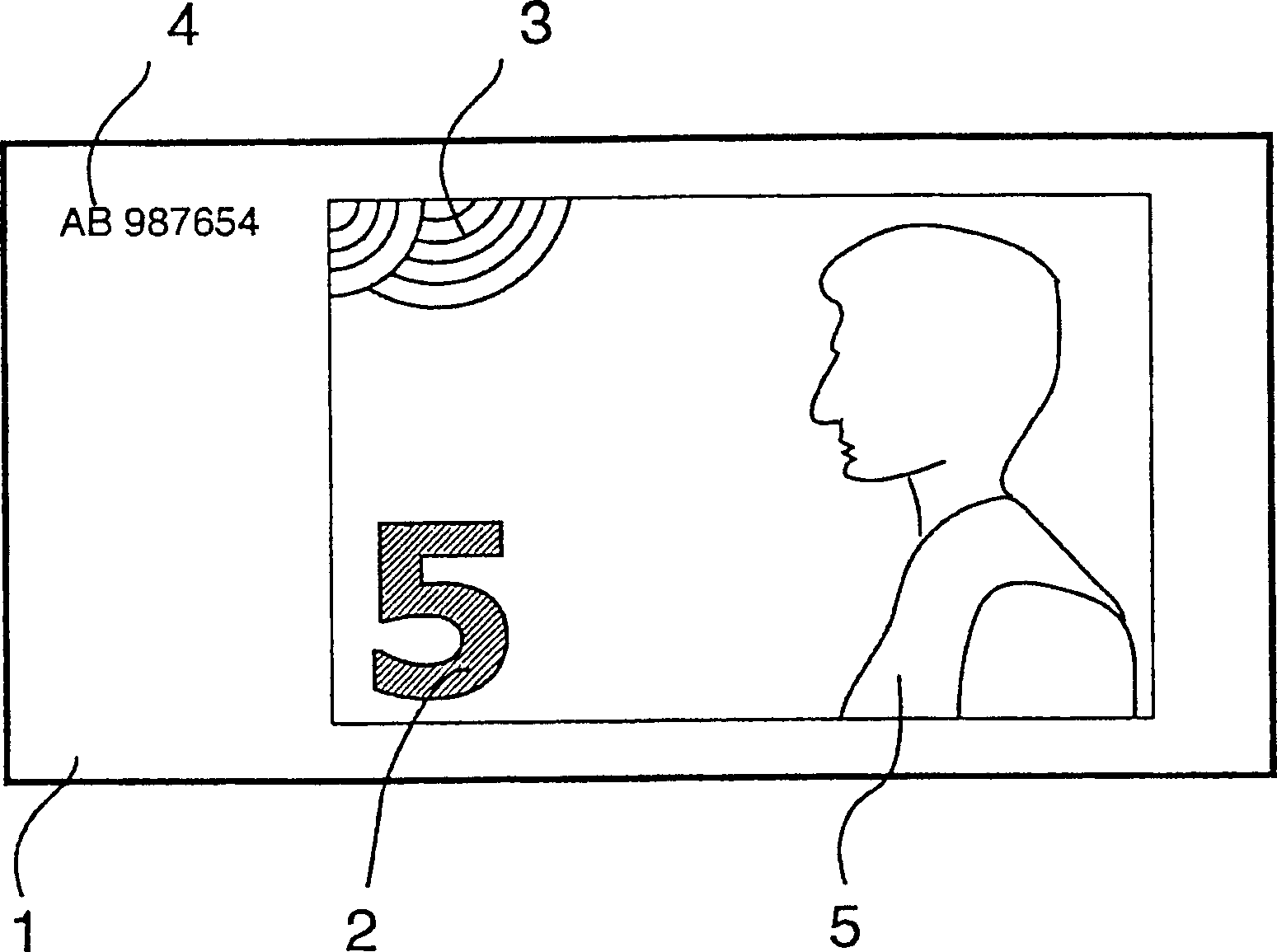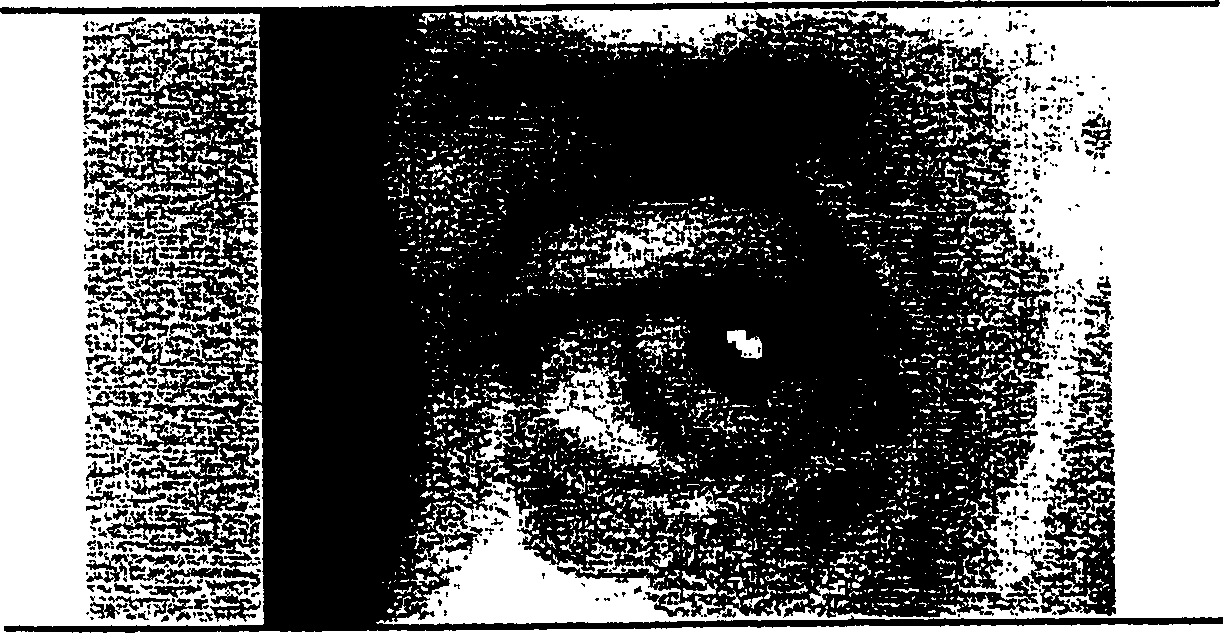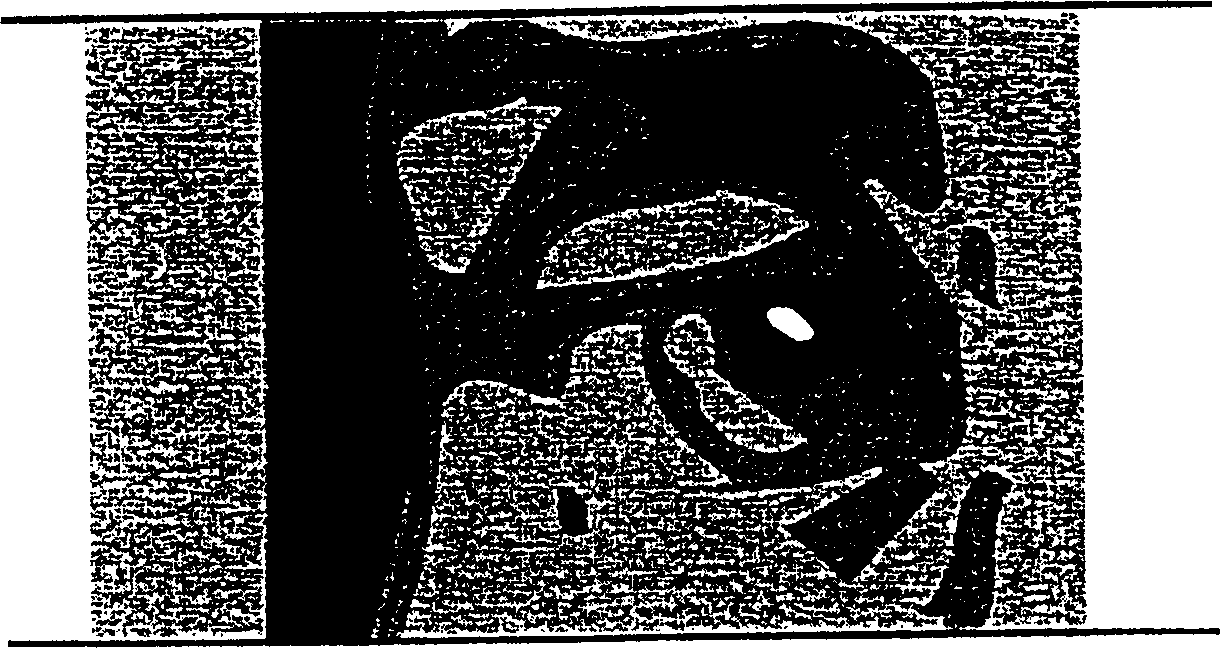Valuable document
An original and data carrier technology, which is applied in the direction of handling coins or valuable banknotes, printing, printing devices, etc., can solve the problems of insufficient ink viscosity, low contact pressure, and lack of tactility, etc., to achieve design freedom and large The effect of economic benefits
- Summary
- Abstract
- Description
- Claims
- Application Information
AI Technical Summary
Problems solved by technology
Method used
Image
Examples
example 1
[0083] If you are going for the most realistic reproduction of your superior's portrait, it is appropriate to decompose the original image by area. This area decomposition is shown in Figure 4 middle. The surface portions 6, 7, 8, 9 and 10 in the figure are all part of the original itself. This means that each surface part is based on a partial image of the original. Such area decomposition is automatically carried out in the halftone differentiation preparation work of the original. By region decomposition, the region corresponding to a certain tonal value becomes a surface part, which is then depicted with a uniform tonal value. In the region-decomposed original, the specific tone value is divided into several tone value levels, and each tone value level is represented by a certain tone value. For example, in the case of a division into 5 levels, the total tonal range 0 to 100% is divided eg into 5 equal parts: from 1 to 20%, from 21 to 40%, from 41 to 60% and so on. E...
example 2
[0086] Example 1 describes how to determine each surface part from the basic pattern of the image. In addition to this method, an embodiment of the present invention may also superimpose an independently generated screen onto the original to generate the various surface portions of the printed image. According to this embodiment, the texture is superimposed on the image of the original, the original is divided into surface parts completely independent of the basic pattern of the image, which surface parts correspond to the surface parts in the subsequent printed image according to the invention . The respective surface portions of the original are each assigned a tone value. The finer the texture used, ie the smaller the portion of the surface that makes up the halftone image of the invention, the more image detail can be rendered. Then, the assigned tone value is converted into the engraving depth value of the printing plate as described above.
[0087] The simplest is to ...
example 3
[0092] Figure 6, Figure 6a ,and Figure 6b Example 3 and Example 2 shown similarly use pixel textures. The difference between the two is that example 3 superimposes the pixel texture on such as image 3 The halftone difference on the diagram is not as in figure 2 on regular halftone images.
[0093] As in Example 2, each pixel is assigned a certain hue value. Since the original is limited to only 5 tonal values, the image converted to pixels only contains 5 tonal values, such as Figure 6a shown. Thus, the image constructed in this example only includes a certain number of tonal values and corresponding depths of the engraving.
[0094] Fig. 6 shows a halftone image composed of regions separated by five tonal values and superimposed pixel meshes. Figure 6a Shown as detail "x" in Fig. 6, the hue value of each pixel in the figure has been assigned the corresponding hue value. Figure 6b shown based on Figure 6a In the resulting printed image, each pixel in the f...
PUM
 Login to View More
Login to View More Abstract
Description
Claims
Application Information
 Login to View More
Login to View More - R&D
- Intellectual Property
- Life Sciences
- Materials
- Tech Scout
- Unparalleled Data Quality
- Higher Quality Content
- 60% Fewer Hallucinations
Browse by: Latest US Patents, China's latest patents, Technical Efficacy Thesaurus, Application Domain, Technology Topic, Popular Technical Reports.
© 2025 PatSnap. All rights reserved.Legal|Privacy policy|Modern Slavery Act Transparency Statement|Sitemap|About US| Contact US: help@patsnap.com



